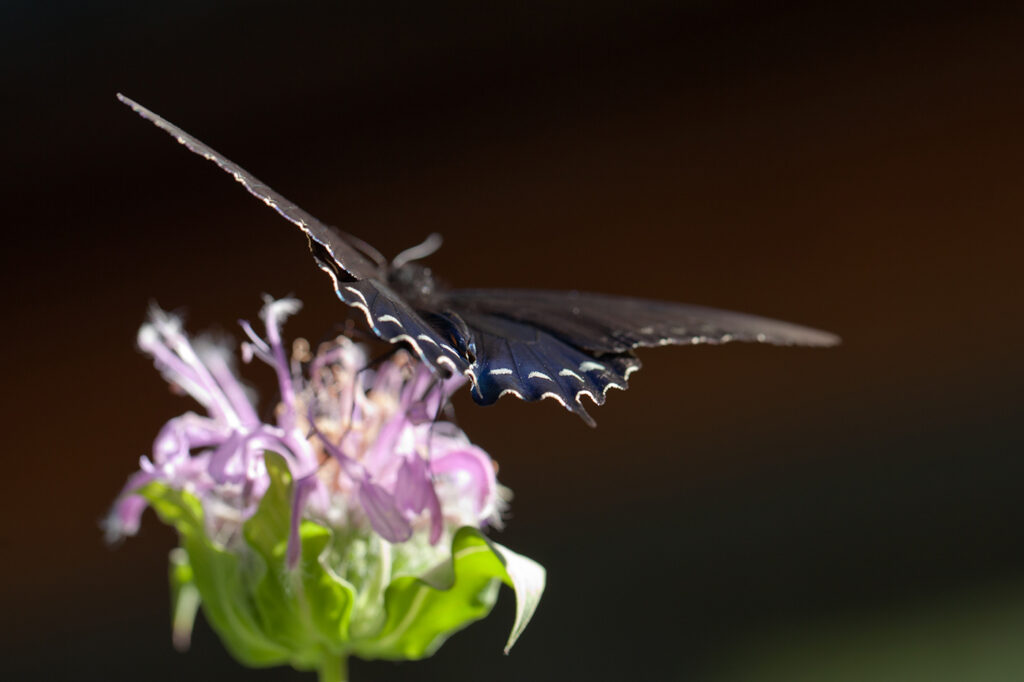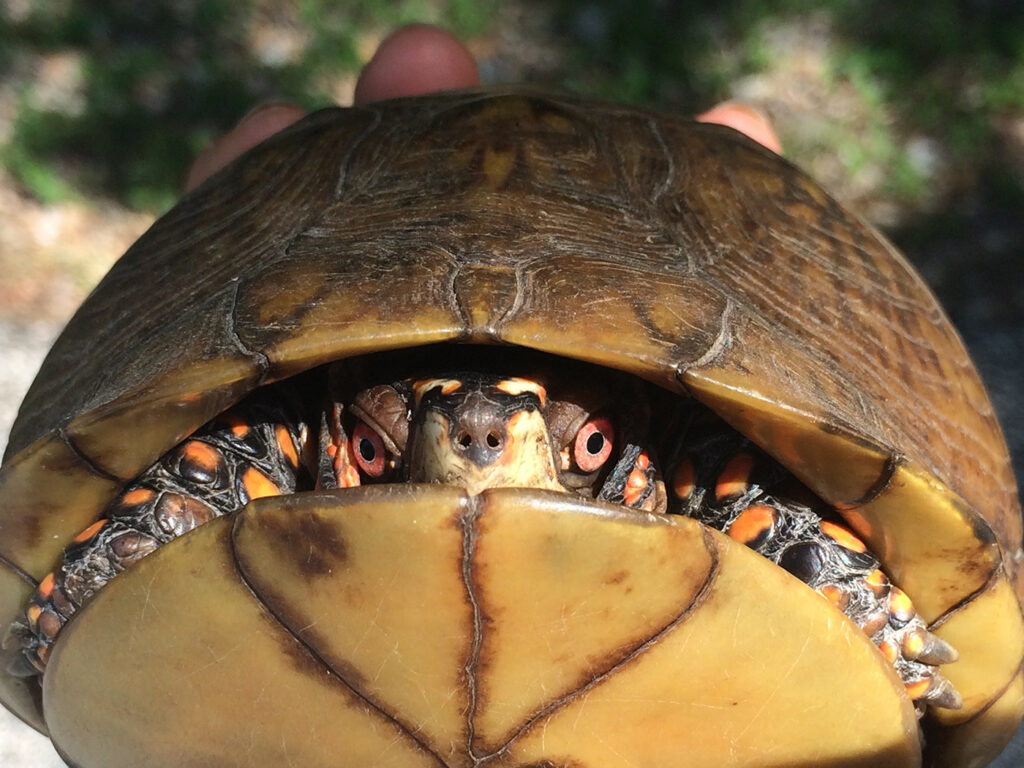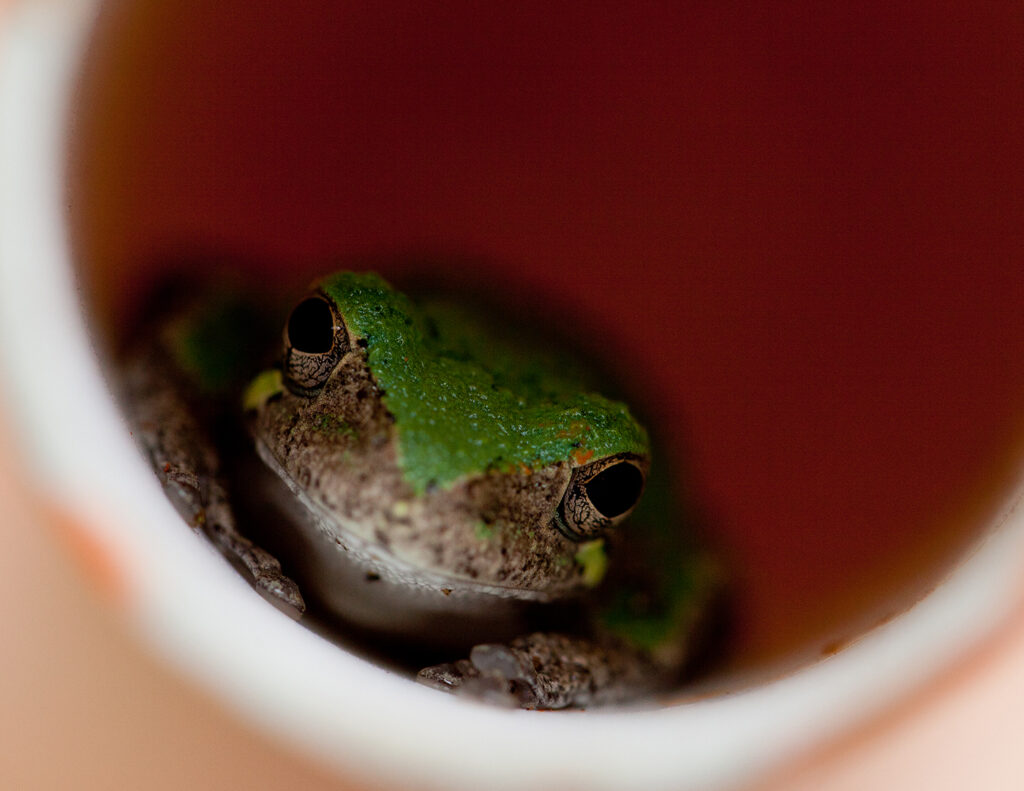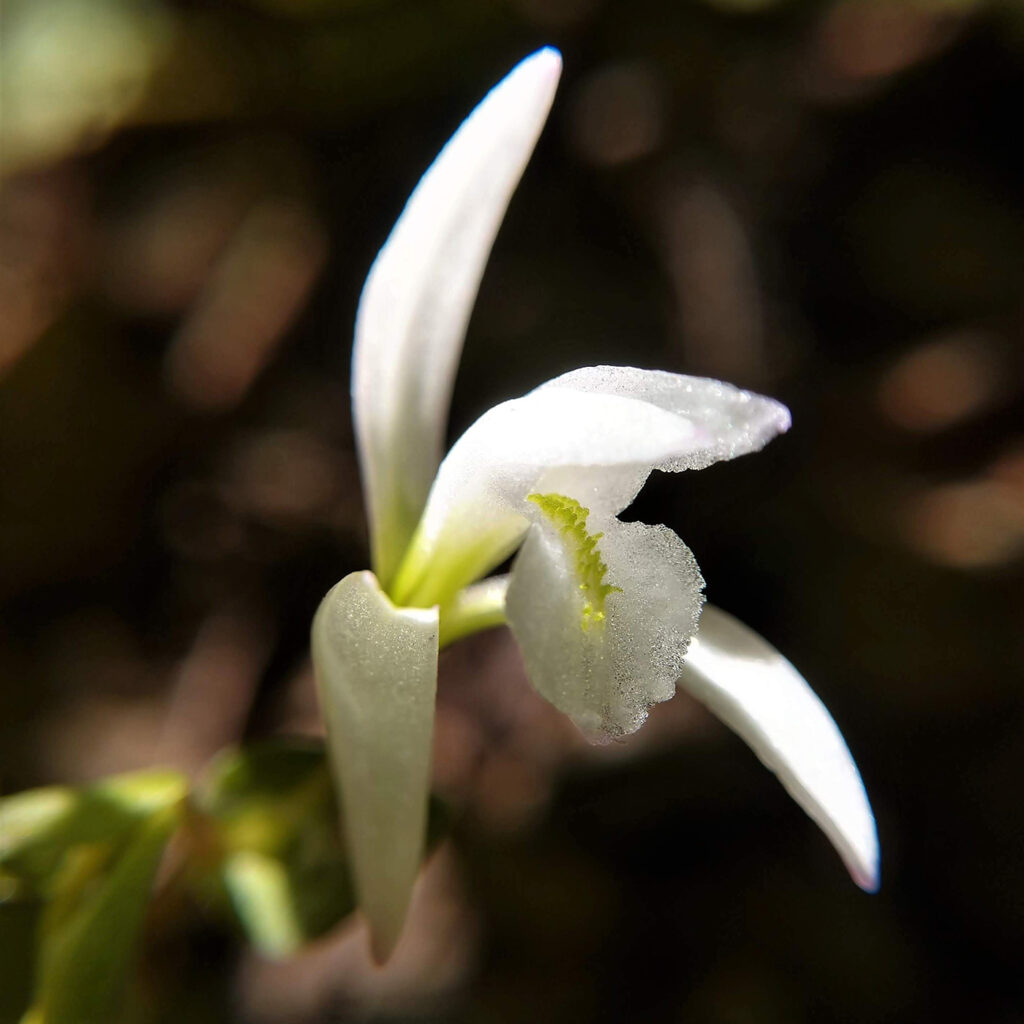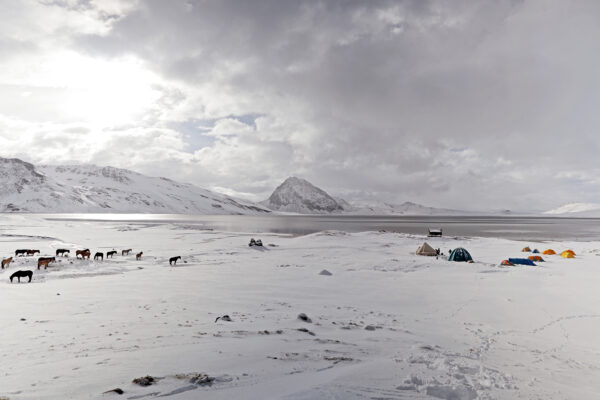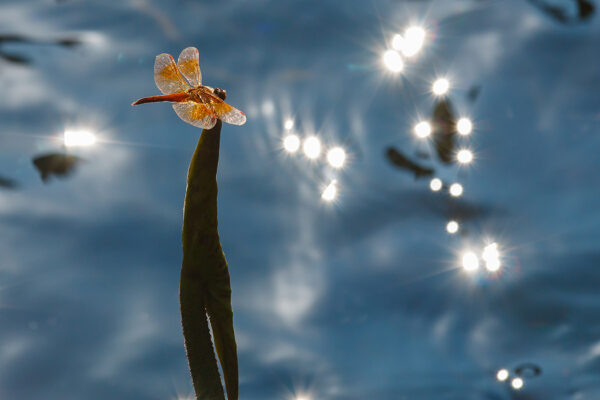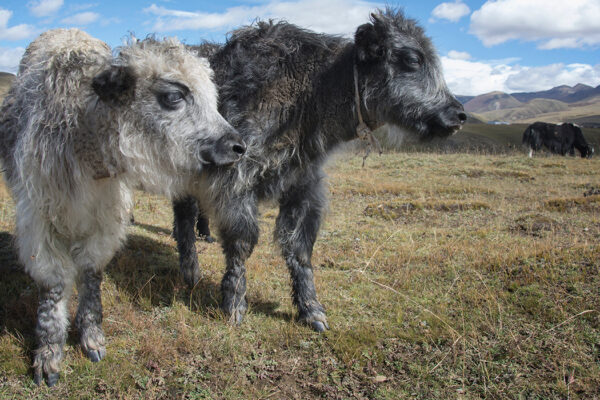Legend has it that notorious outlaw Jesse James had a secret hideout in Meramec Caverns where he evaded capture for years. Could the same sort of strategy work for rare plants: using parts of the Ozarks as refuge from the pressures of climate change?
Certain habitats might indeed act as safe harbors under future climate scenarios. Areas like sheltered coves, north-facing bluffs and slopes, and valleys could preserve cooler temperatures or other favorable conditions for plants, even as surrounding areas become warmer or drier. Scientists call these places climate change refugia — or even climate change microrefugia, if they’re particularly small.
Researchers have built models that can help predict the most likely locations of climate change refugia in a given geographic area. Unfortunately, the climate and weather data needed for these models is typically available only at a fairly coarse spatial resolution — like at half-mile scale, or even larger. Without better weather data, today’s models are of limited use to ecologists and conservationists.
But fine-scale climate data can help make the picture clearer.
With support from the Living Earth Collaborative at Washington University, researchers from the Missouri Botanical Garden and Washington University are collecting data to develop a high-resolution temperature map of Tyson Research Center, the university’s environmental field station near Eureka, Missouri. The map will be paired with surveys of plant species and used to identify local landscape features that might be able to buffer changes in the macroclimate of the surrounding region.
“This effort will help us identify the small places — the refugia — where plants might persist” under climate change. “We can draw conclusions from what we find at Tyson and apply them more generally to places in the Ozarks and similar locations.”
Adam Smith, Missouri Botanical Garden
“This effort will help us identify the small places — the refugia — where plants might persist” under climate change, says Adam B. Smith, associate scientist with the Missouri Botanical Garden and a principal investigator for the project. “We can draw conclusions from what we find at Tyson and apply them more generally to places in the Ozarks and similar locations.
“Tyson is fairly hilly, which provides potential opportunities for refugia. There’s plenty of streams, larger or smaller — and that might be important,” Smith says. “The forest that we see is certainly representative of an important ecosystem in the northern part of the Ozarks. And even though the adult trees themselves might be experiencing hotter temperatures, they provide a cooling effect, which could potentially help plants under them to persist.”
The climate change refugia project is a welcome new line of inquiry at Tyson, long a site of interdisciplinary research between departments at Washington University and various institutions in the region and beyond.
“The more data we have, the more we know about the site,” says Kim Medley, director of the Tyson Research Center and a co-investigator for the climate change refugia project, “and the more that knowledge can feed into new research that asks completely different questions.”
Tyson Research Center is one of a handful of field stations supported by colleges and other institutions in the Ozarks region. Among these field stations, Tyson is likely the most productive in terms of the number of research investigators actively working on site and the breadth of topics being explored. The Tyson leadership team also places a great deal of focus on collaborative research.
The climate change refugia project is a prime example of such collaboration. Since 2018, seed grants from the Living Earth Collaborative have helped spark new conservation connections for biodiversity-focused projects led by St. Louis–area researchers — many of which have been realized at Tyson.
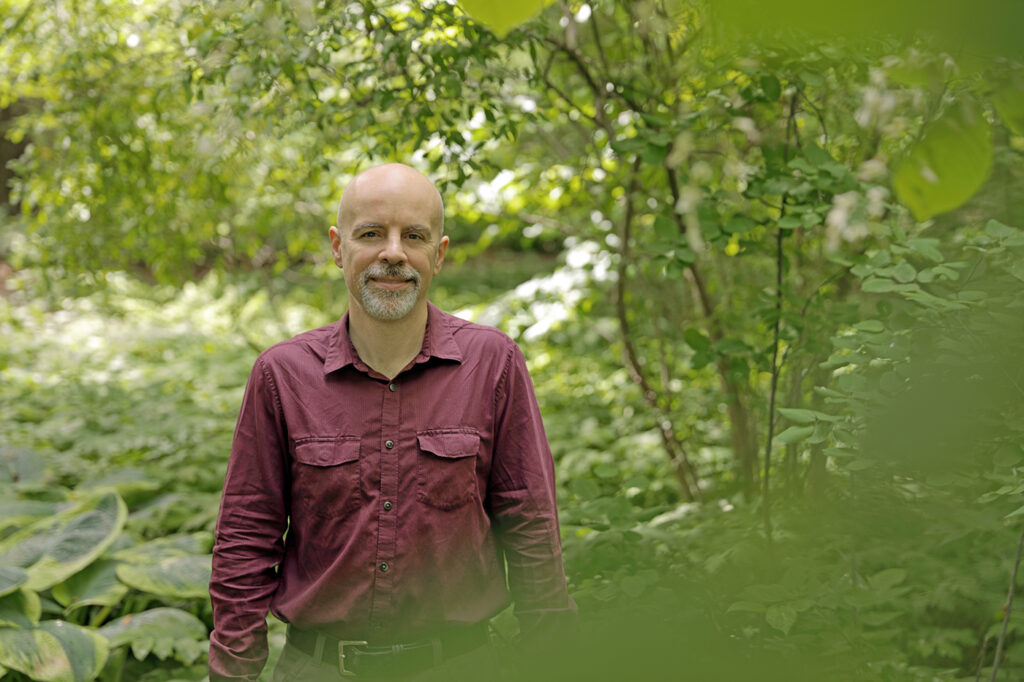
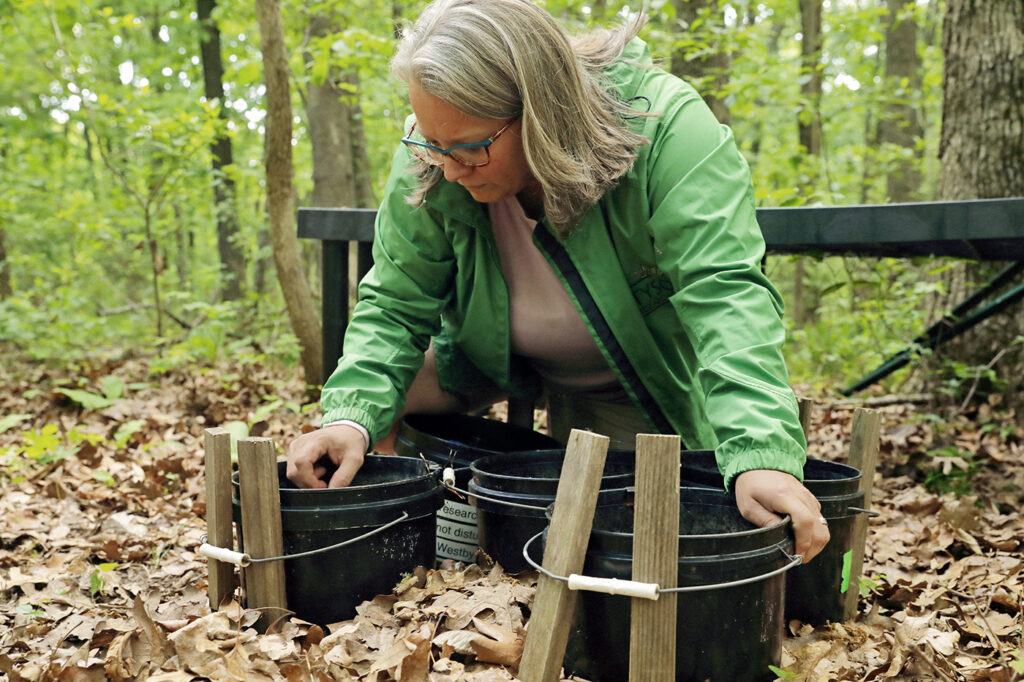
Located 20 miles southwest of the Danforth Campus, just off I-44, Tyson Research Center is a 2,000-acre forest wonderland at the northern edge of the Missouri Ozark region.
As private property, Tyson protects natural resources for research and education purposes. And more than 4,000 acres of natural areas surrounding Tyson — Castlewood State Park is a neighbor, across the Meramec River, as well as other nearby state conservation areas — help cushion it from encroachment by suburban development in the metro Saint Louis area.
But it wasn’t always this way. While many field stations double as biological preserves, Tyson has a storied history of land use and is not pristine by any measure.
Most of the Ozarks was clear-cut for pine and oak timber between 1890 and 1910. Local forests grew back rapidly. But WashU biologists believe that the land around Tyson used to be much more open, and contained fewer trees, prior to logging activity in the early 1900s.
A limestone quarry known as the Mincke Hollow Quarry operated between 1877 and 1927 near the area where Tyson now stands. Old foundations of houses and a spring box at the Mincke Spring are the only obvious traces of the small company town once occupied by the men who worked in the quarry and their families.
But perhaps the most dramatic use of what is now Tyson occurred during World War II. That’s when the federal government used eminent domain to acquire the land for storing munitions and explosives.
The government constructed 65 bunkers that were camouflaged into Tyson’s hillsides, as well as various buildings, roads and the facility’s permanent fence. Cleaned up after military operations subsided, the property operated briefly as a county park from 1950 to 1951, but it was once again sequestered for government use during the Korean War.
The university obtained Tyson as surplus property from the federal government in 1963.
“In Tyson’s early days, there were fewer faculty researchers and more youth visiting Tyson, primarily through the Science Outreach Program,” Medley says. Projects focused on lizards and reptiles, the local deer population and hydrogeology. “Faculty and their lab members would come to Tyson for field work and leave, likely without seeing one another.”
Today, Tyson is an important Ozarks field station, but it’s also so much more. It’s a microcosm of Washington University, where researchers with different types of expertise and at different stages of their careers convene to study issues from a variety of perspectives.
“With the programmatic support from students working under the Tyson Environmental Research Apprenticeship and undergraduate fellowships, principal investigators are able to ask much larger questions, with more ambitious projects,” Medley says. Large-scale and long-term experimental plots have become an essential part of Tyson’s research mix, examining forest diversity and fire, tick-borne disease and wildlife, and other important topics including the impacts of human-induced climate change.
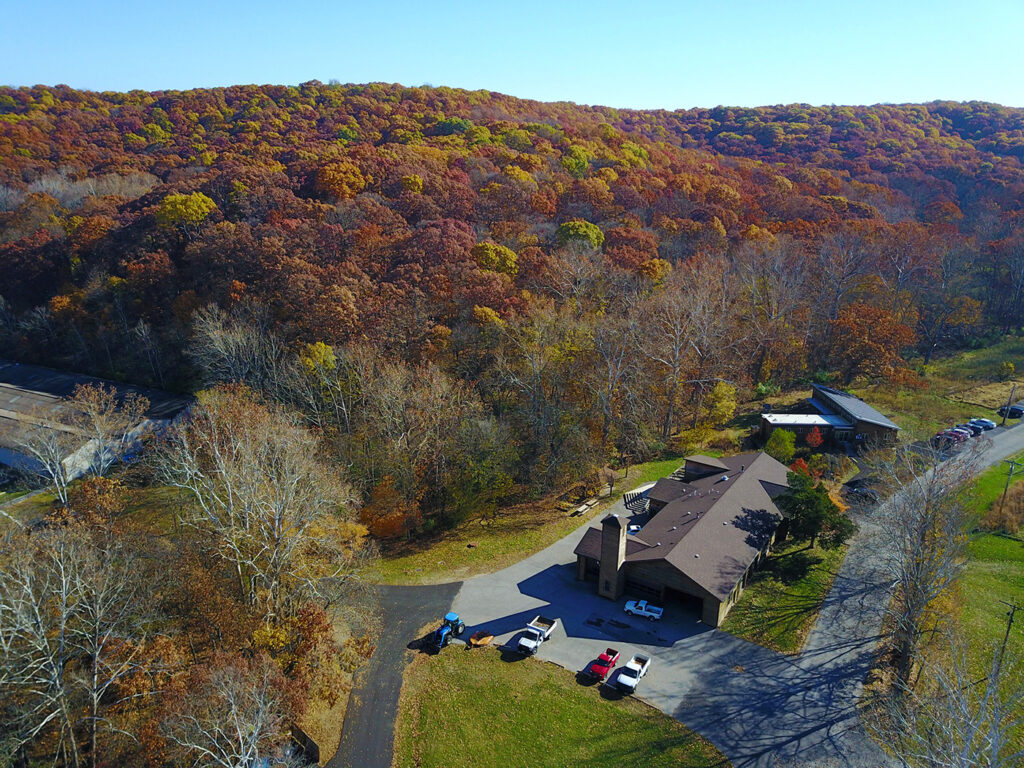
“As a plant biologist myself, I know that conducting robust research in the field is essential to understanding the world around us,” says Feng Sheng Hu, dean of the faculty of Arts & Sciences, the Lucille P. Markey Distinguished Professor, and professor of biology and of earth and planetary sciences. “Tyson is an invaluable resource for our campus and the greater St. Louis community, providing rich, collaborative field opportunities for both scientists and students. Their work toward understanding long-term ecosystem dynamics in relation to climate change is critical.”
Which brings us back to Jesse James.
Why hide out in the Ozarks? It’s a smart move for plants, it turns out. The climate of the Ozarks has not warmed very much over the past 100 years, even as surrounding areas got warmer.
Scientists have puzzled over this Ozarks “warming hole.” Some believe it is due to a chance convergence of weather patterns. Others suggest that the dense local forests that re-established themselves after clear-cutting in the early 1900s may have protected the Ozarks from temperature change — at least for now.
“The Ozarks are now much more forested than they’ve ever been,” Smith says. “Before European settlement, they were probably more like a savannah, with sporadic trees among long expanses of grass.” Fire likely played an important role in creating and maintaining these open plant communities.
But while temperatures haven’t warmed much, rainfall patterns are definitely changing. “Rainfall has increased over the past 100 years in the Ozarks by about 10%, compared to what it initially was,” Smith says. “So things are indeed getting wetter.”
The Corps of Engineers has noticed, as have local (human) residents, who have faced more frequent flooding brought on by sudden bouts of intense rainfall. The Great Flood of 1993 was a wake-up call for many, but not enough has been done to anticipate coming changes.
“Missouri generally gets a D or an F grade on preparedness for climate change,” Smith says. “Part of the reason is that compared to some other places, we’ve invested very little in assessing vulnerability to climate change. This lack of attention includes examining how the Ozarks would respond.”
Plants and animals have few choices in the face of climate change. Some animals can change their behavior to adjust to new conditions: For example, a lizard can seek more shade on a hotter day. As a second option, both plants and animals can relocate; that is, literally, they can seek a new home where the habitat is more like the one they once knew. Plants do this by dispersing seeds that grow into new plants somewhere else. Or plants and animals can evolve. But this third option can take some time, and many species don’t have time to spare.
“Overall, the species that are patchy or rare will likely be at most risk,” Medley says. “I am also concerned about climate change making more opportunities for non-native species to gain a foothold and spread under the novel and rapidly changing conditions that are likely in our future.” About one-third of all plants known to exist in Missouri are non-natives.
“The climate change refugia project provides insights into why plant species might migrate, persist or go extinct locally or globally in response to climate change.”
Jonathan Myers, associate professor of biology
“The climate change refugia project provides insights into why plant species might migrate, persist or go extinct locally or globally in response to climate change,” says Jonathan Myers, associate professor of biology in Arts & Sciences and a co-investigator on the climate change refugia project.
Myers is also the principal investigator for the Tyson Forest Dynamics Plot, which is part of the Smithsonian Forest Global Earth Observatory (ForestGEO), a coordinated network of 72 forest-ecology plots spanning 27 countries. Together with these collaborators from around the world, Myers is using data from Tyson to explore a wide range of questions, including how and why global environmental change — including climate change, drought, fire and invasive species — alters plant populations, communities and forest ecosystems.
“In the ForestGEO plot, we monitor changes in the abundances, geographic distributions and performance (growth, survival and reproduction) of more than 32,000 individual stems of 40 co-occurring species of trees and shrubs over time,” Myers says. “By integrating these existing data on forest dynamics with data from the climate change refugia project, we can begin to answer questions about the relative roles of abiotic and biotic factors in determining plant responses to climate change.
“In addition, long-term studies of plant performance in climate change refugia can help identify which life stages of a given plant species — from seed reproduction and seed germination to seedling establishment and adult survival — are most impacted by climate change.”
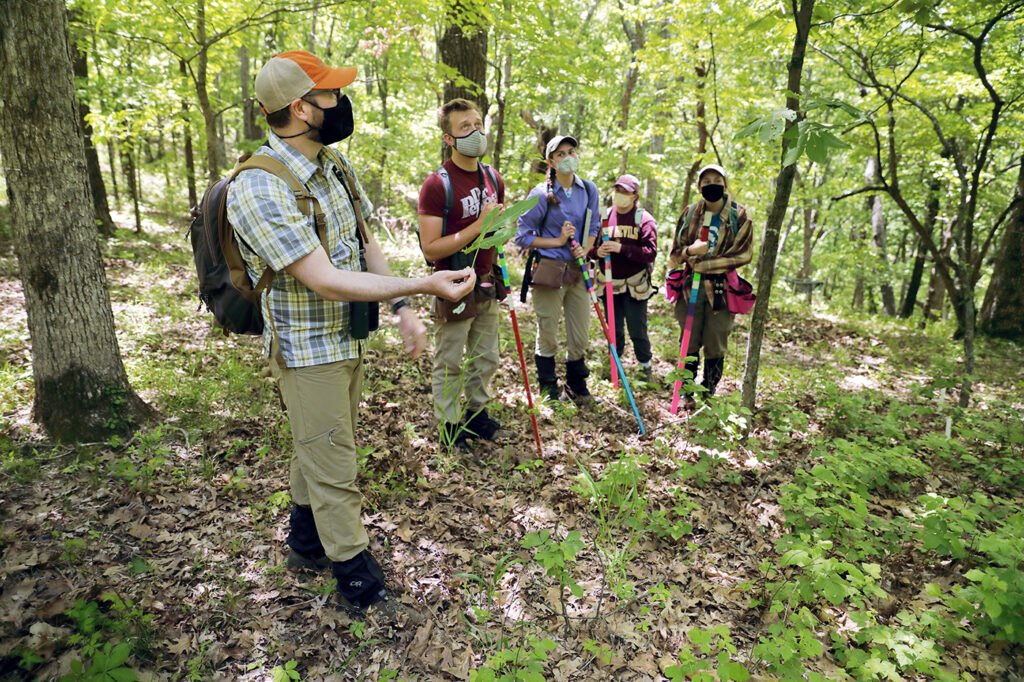
Ecologist Stephen Murphy helped plan the sampling design and protocols for the field portion of the climate change refugia effort.
“A common problem is that climate data are available only at relatively coarse spatial resolutions, say, larger than a kilometer squared,” says Murphy, co-investigator of the climate change refugia project and a postdoctoral fellow at Ohio State University. “When developing maps of species distributions and predicting range shifts due to climate change, it is difficult to make inferences below this scale, since we don’t have relevant data to use.
“So we decided to collect our own climate data using dataloggers that we deployed at Tyson,” he says. “These dataloggers, when placed in areas where species are sampled, allow us to more accurately describe the true climate environment that a species experiences.”
For a plant on the forest floor at Tyson, that might mean the actual temperature and precipitation conditions 10 inches above the ground, under the shade of a mature hickory tree, within 10 feet of a small running stream — instead of a National Weather Service estimate based on weather station data collected 20 miles away.
Murphy developed a clever and inexpensive way to shield the basic dataloggers using stacks of Frisbees. With the help of field technicians Katie Skinker and Allegra Pierce, the researchers deployed 35 dataloggers for the first field season and then redeployed the set to gather information in new areas of the Tyson facility.

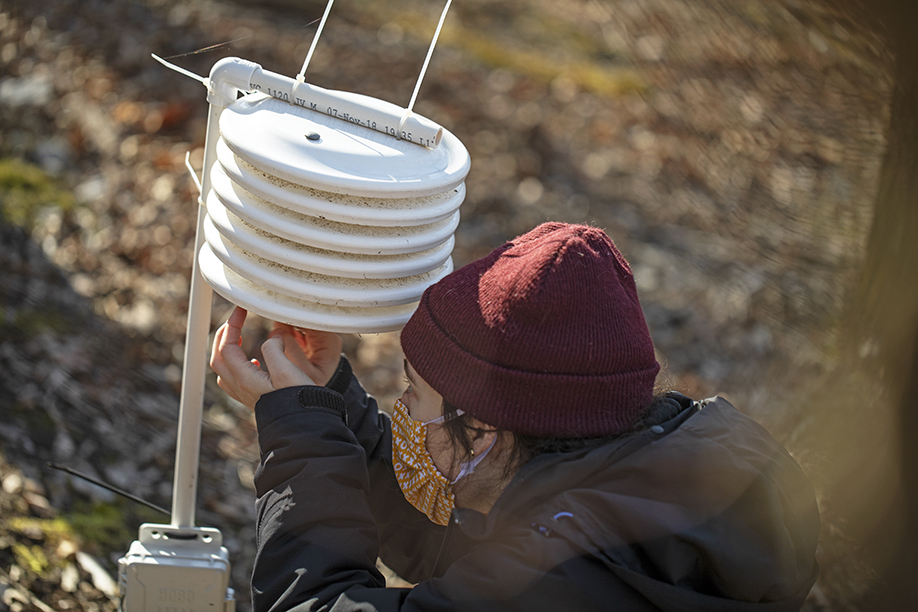
“By sampling species within plots in the field and recording climate information with dataloggers installed within these plots, we hope to be able to develop better and finer-scale models that can help us predict species responses to climate change,” Murphy says. “We’re hoping that these data will provide us with the ability to better understand how plant species — especially trees and shrubs — respond to climate change at highly local scales.”
The researchers also want to determine whether the information obtained from the traditional coarse-scale models can tell them anything about local-scale responses to climate. Although this is implied from these models, no one has actually tested it.
“Because we now have the climate and species data at both small and large scales, we can directly quantify the degree to which the coarse-scale models can accurately predict local-scale responses,” Murphy says.
The climate change refugia project at Tyson Research Center is still in progress. The researchers collected data during the pandemic year of 2020. After one final spring and summer of field work in 2021, the scientists are now finalizing their maps and analyses.
“In terms of utility, this is not a project that is necessarily confined to the sites where the data are collected,” Medley says. “Its intent is to understand how to better predict — at these fine scales — the patterns at broader spatial scales, even outside of Tyson.”
It’s too early to draw conclusions, but Smith says: “In comparison to other types of forests, the ones here are likely to be more resilient, especially because some of the rarer habitats are already pre-adapted to hotter, drier conditions. I’m thinking especially of glades, which are shallow-soiled prairies that harbor a lot of rare species both here and in Tennessee.”
He anticipates that many species would want to move northward as temperatures rise, if they could. “Unfortunately, north of the Ozarks, one runs into what is essentially a corn ‘desert’ with lots of unnatural habitat that runs for hundreds of miles. It would be very difficult for species to traverse that — whether by foot, wing or seed.
“As for future climate scenarios, the greatest uncertainty is what humans do,” Smith says. “In the near term, the biggest unknown lies in how much, or if, humans reduce greenhouse gas emissions. Human behavior is always the component of natural systems that is hardest to predict — and we are part of natural systems.”
